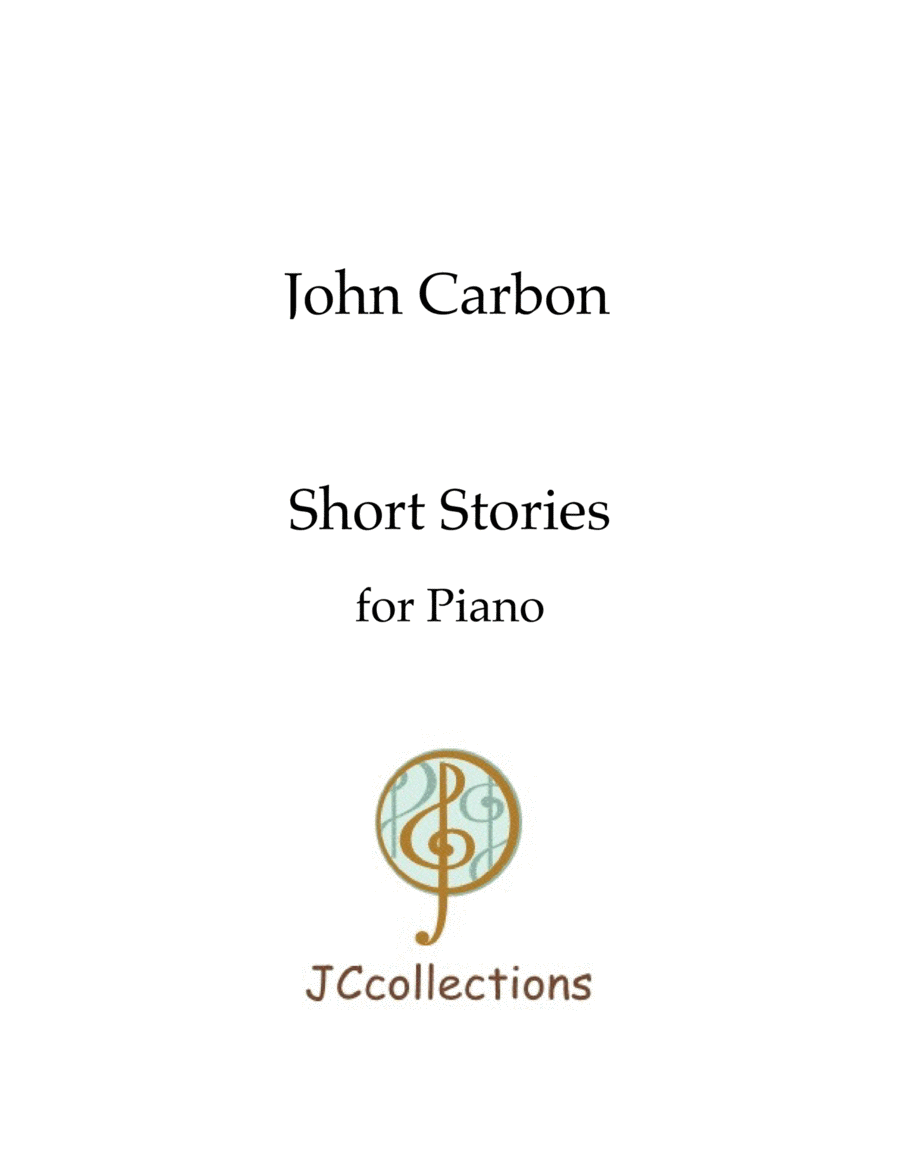Piano Solo - Digital Download SKU: A0.966219 Composed by John Carbon. 20th Century,Contemporary. Score. 92 pages. John Carbon #3586213. Published by John Carbon (A0.966219). The 24 pieces contained in my Short Stories for piano were composed between 2013-2018. I had originally grouped the pieces into a collection titled The Well-Blended Primer (subsequently withdrawn). I substantially revised, in some cases reconceived, the entire collection in 2017-18. Because my original intention was to include pieces that exhibited pitch centricity around each of the 24 possible major and minor keys, the earlier title, refering to J. S. Bach's 2-volume Das wohltemperierte Klavier, seemed to fit. As in Bach's work, some of the pieces in my collection exhibited a pronounced contrapuntal attitude. During the development of the work I had planned to alternate prelude and fugue-like pieces, but the end result was more of a hybrid collection that could be thought of as being influenced by Bach, but even more so by Chopin's group of 24 one-of-each-key Preludes, and systematically key-centered contrapuntal collections by Hindemith and Shostakovich. I was also influenced by shorter character pieces by composers such as Schumann, Debussy and Prokofiev that exhibit a more lyrical, narrative nature, to name only a few composers. In Short Stories, my plan to alternate preludes and fugues, or at least to systematically vary the degree of contrapuntal density, isn't readily perceived. There is certainly enforced variety in pitch centricity, but this feature isn't arranged symmetrically, and there is a range of tonal, modal, chromatic and atonal languages explored in the collection. Stylistically, there are many influences to be heard here. In fact, some of the titles of the individual pieces refer to other piano composers (for example Tea with Claude and Maurice, Czerny's Id, George Sand's Dream and Joplin's Tick). The name of the present work, Short Stories, describes these modest narratives better than the original title and the revised collection is less abstract than the 2013 version. From a pianist's standpoint, I would venture to say, these reconceived pieces are more concerned with color, register and voicings particular to the instrument. Some of the more extensive revisions I made to the original pieces were stylistic ones involving changes in the harmonic language and articulation. In other cases I fleshed out sketch- like miniatures into more substantially developed portraits, or conversely, I deleted what I thought might be considered to be extraneous material that obscured the abbreviated sketch-like nature of the narration. John Carbon
